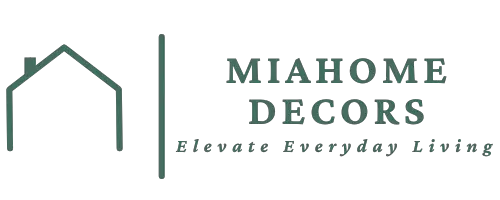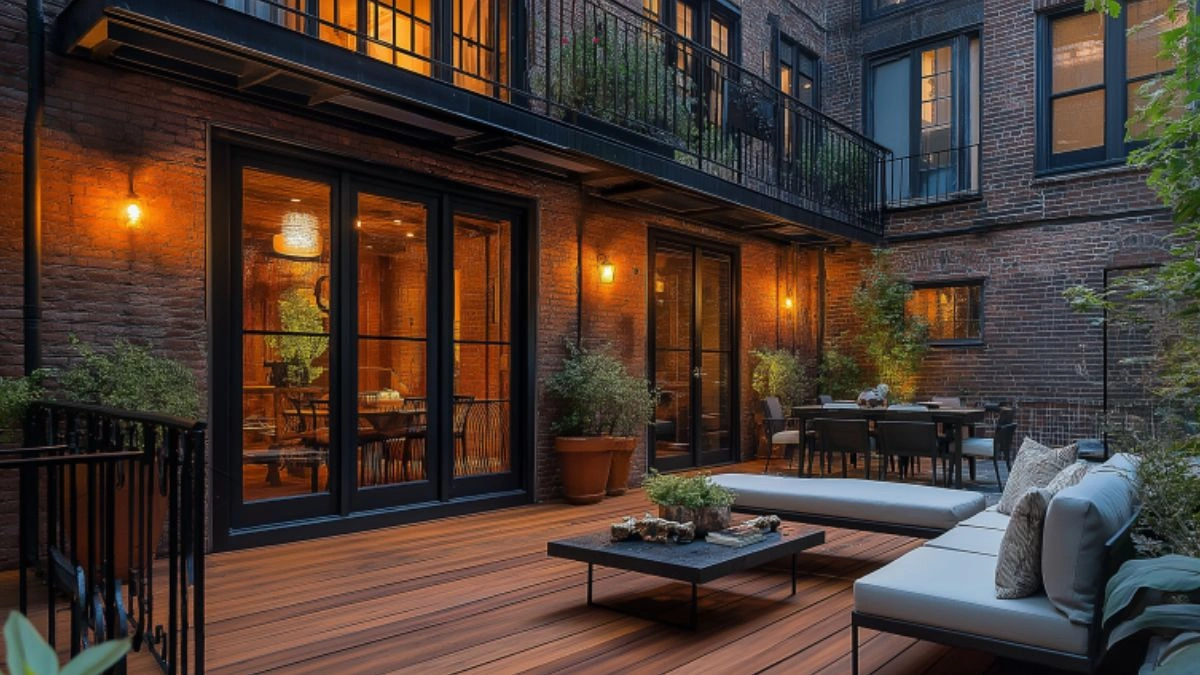Rich Deck Stain Colors for a Sophisticated Look
Table of Contents
Your deck is more than just an outdoor surface—it’s a natural extension of your home. Whether you host evening gatherings, sip coffee in the mornings, or lounge with a book, your deck plays a big role in setting the mood of your outdoor living area. And the fastest way to elevate that mood? Choosing the right stain color.
According to landscape design experts, rich deck stain colors can transform a basic deck into a sophisticated backdrop that complements your home’s architecture and surroundings. From deep mahogany to weathered gray, the right hue adds personality, warmth, and curb appeal.
But stain color isn’t just about aesthetics. It also plays a role in maintenance, longevity, and the way your deck weathers over time. Richer tones often provide better UV protection and highlight the natural grain of the wood, giving your space a timeless, luxurious appearance.
This article explores the best rich deck stain colors for achieving a sophisticated look. We’ll break down trending shades, classic hues, wood tone considerations, and pro tips for flawless application. Each section includes visual guides and MidJourney prompts to help you picture the possibilities for your own outdoor space.
Deep Mahogany: The Ultimate in Warmth and Elegance
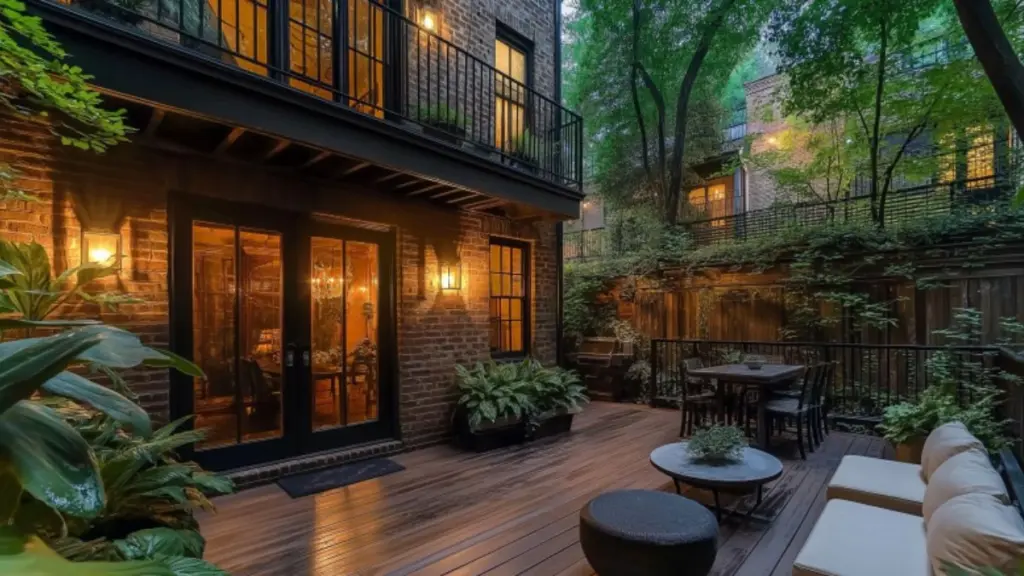
Few deck stain colors convey luxury quite like mahogany. With its deep reddish-brown tones and rich saturation, this color adds instant warmth and depth to any outdoor space. It’s particularly suited to traditional homes, but can also add dramatic contrast in modern designs.
Mahogany works beautifully with dark metal accents, black or wrought iron railings, and cream or beige exteriors. When paired with tropical plants or rattan furniture, it evokes a resort-like atmosphere. The natural luster of this tone also highlights wood grain details, especially on hardwoods like ipe, redwood, and cedar.
Maintenance for this hue involves periodic sealing to maintain vibrancy and prevent graying. Semi-transparent stains allow more grain to show, while solid stains provide maximum color saturation and UV protection.
Design Pairing Guide: Mahogany Deck Stain
| Accent Element | Recommended Match |
|---|---|
| Railing Style | Black iron or dark bronze |
| Furniture Colors | Beige, terracotta, or deep green |
| House Exterior Tones | Cream, stone, or charcoal gray |
| Lighting Style | Lantern-style, warm LED |
Classic Walnut: Understated Luxury and Versatility
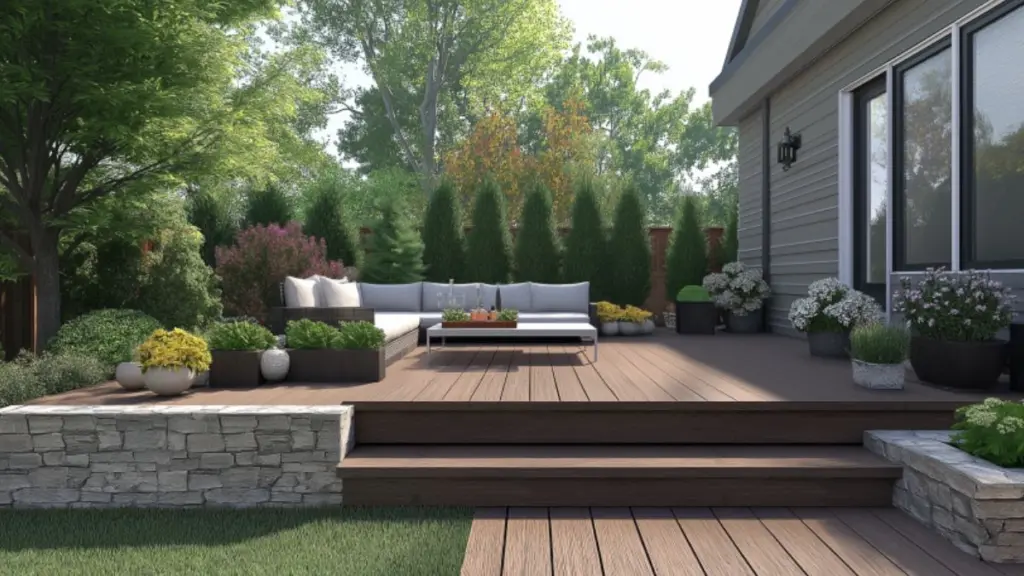
Walnut stains are a go-to choice for homeowners seeking timeless appeal. This deep brown hue leans slightly cool, with a refined look that doesn’t overpower surrounding elements. It’s versatile enough to pair with most home styles—from rustic cabins to contemporary dwellings.
What sets walnut apart is its ability to act as a grounding element. It brings balance to brightly colored outdoor décor and pairs effortlessly with natural materials like stone, steel, and slate. It’s also forgiving in high-traffic areas, as it hides dirt and scuffs better than lighter tones.
Walnut stains are available in both semi-transparent and solid finishes. For a more rustic look, opt for semi-transparent to let the wood’s texture shine through.
Walnut Deck Design Overview
| Feature Focus | Walnut Pairing Benefit |
|---|---|
| Stone garden walls | Harmonious and grounding |
| Gray-tone furniture | Cool-toned contrast |
| Neutral exteriors | Seamless integration |
| Modern pergolas | Adds richness to minimalist style |
Charcoal and Black Stains for Bold Sophistication
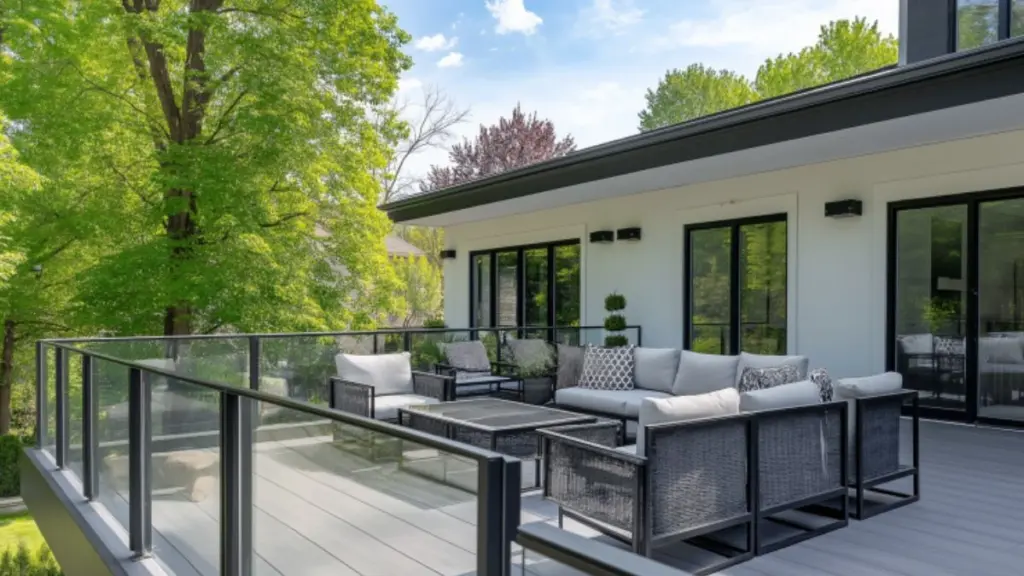
For a modern, edgy, and high-end aesthetic, few choices rival a charcoal or black deck stain. These deep hues create a sleek foundation for contemporary outdoor furniture and minimalist design schemes.
Charcoal stains—slightly lighter than black—allow for wood grain visibility while still providing striking visual contrast. Solid black stains, on the other hand, lean toward drama and require a well-balanced backdrop to avoid feeling too heavy.
These dark shades are particularly stunning against white siding, pale stonework, and metallic or glass accents. They also offer excellent UV protection and are less prone to showing stains from dirt or fallen leaves.
Pros and Cons: Dark Stain Shades
| Feature | Benefit | Consideration |
|---|---|---|
| UV resistance | High protection | May retain more heat |
| Visual contrast | High-end, dramatic appearance | Can dominate small spaces |
| Hides surface wear | Longer intervals between re-coats | May require frequent cleaning |
Weathered Gray for Coastal and Contemporary Styles
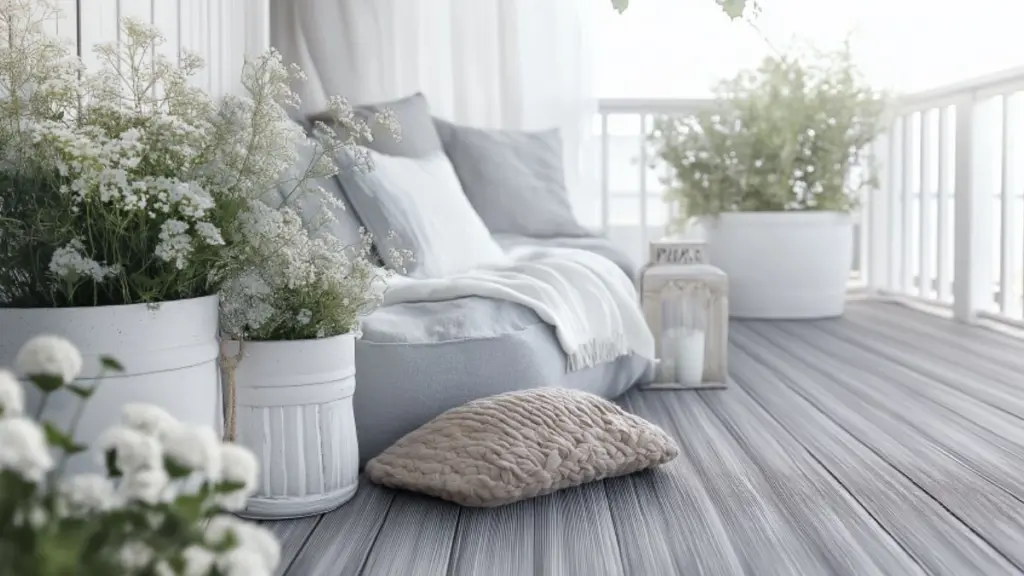
Weathered gray deck stains have surged in popularity due to their relaxed, coastal-inspired feel. Mimicking the natural patina of aged wood, this tone is ideal for beach homes, cottage gardens, or minimalist spaces aiming for an organic aesthetic.
The beauty of weathered gray is its softness—it blends with natural landscapes, gravel paths, and soft-hued exteriors. It’s also highly photogenic, especially in golden hour light when the gray takes on silvery, almost metallic reflections.
You can achieve this look with pre-tinted stains or allow wood to gray naturally over time (which requires a specific maintenance strategy). For those who want color consistency and UV protection, choosing a semi-transparent stain in “driftwood gray” or “silver ash” is the way to go.
Weathered gray pairs best with white, navy, sage, and muted coastal colors. Add in natural textures like jute rugs, linen cushions, and pale stone accents to complete the look.
Design Inspiration Table: Weathered Gray Decks
| Complementing Element | Best Pairing Colors/Materials |
|---|---|
| Throw pillows | White, sage, muted blue |
| Exterior house trim | Crisp white or pale wood |
| Deck accessories | Concrete pots, natural rope |
| Furniture frame finish | Light teak or white metal |
Red Oak and Cedar Tones for a Vibrant Finish
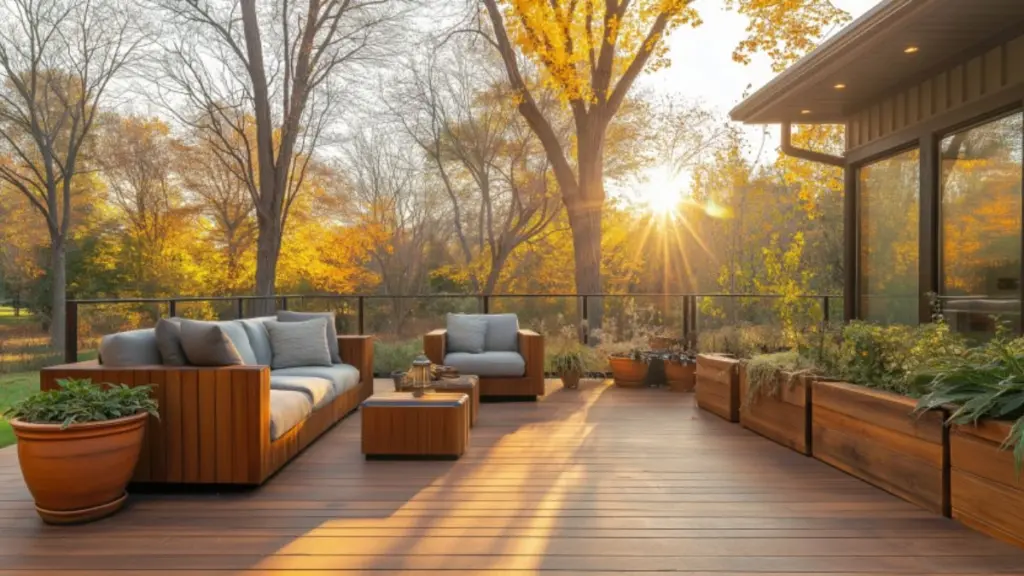
For those who love warm, earthy tones, red oak and cedar stains offer a vibrant yet refined appearance. These rich orange-to-red hues are especially suited for rustic homes, craftsman-style architecture, and outdoor settings surrounded by trees or natural wood elements.
Cedar stain is a popular choice for homeowners who want a more lively, golden-red look without going too bold. It enhances the wood’s natural tone while resisting sun fade better than unstained cedar.
Red oak stain leans slightly darker and redder, adding a cozy, inviting atmosphere to outdoor dining areas and fire pit zones. Both stains work best with warm-colored accessories—think deep green, rust, mustard, and terracotta.
To avoid overwhelming small spaces, pair these stains with neutral trim or whitewashed furniture. Also, consider using a satin or matte finish to tone down the shine and allow the richness to come through subtly.
Red Oak vs. Cedar Stain Comparison
| Feature | Cedar Stain | Red Oak Stain |
|---|---|---|
| Tone | Golden orange-red | Deep red-brown |
| Best Pairing Exterior | Taupe, dark green, cream | Earth tones, beige, black |
| Design Style | Craftsman, rustic, cottage | Farmhouse, lodge, boho |
| Light Reflection | High | Moderate |
Neutral Tones for a Subtle, Sophisticated Finish
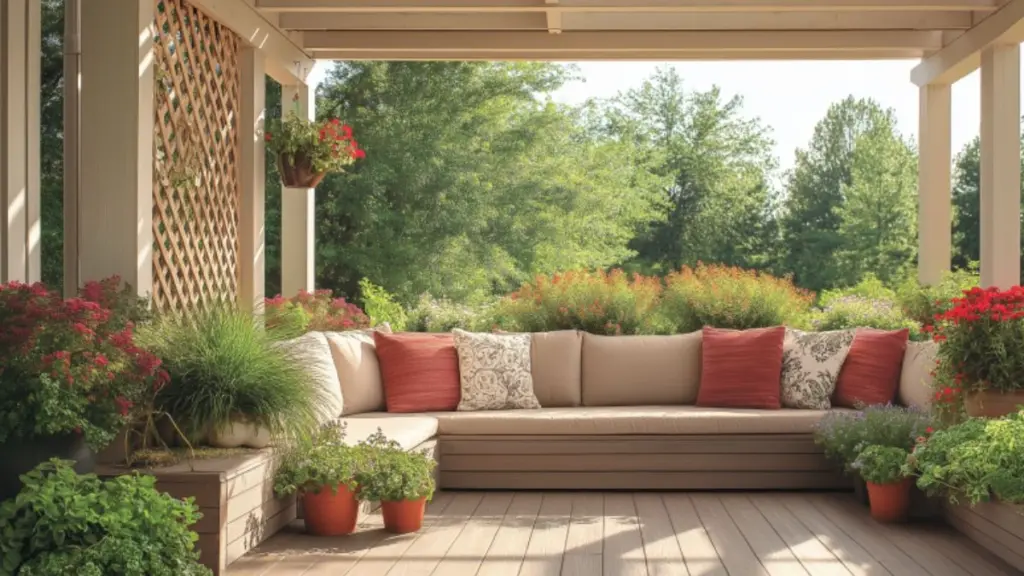
Sometimes less is more. Soft brown and beige-toned stains create a neutral backdrop that complements almost any landscape. These colors are ideal for homeowners who prefer subtle elegance over bold statements.
Soft mocha, taupe, and sand tones work especially well with minimalist designs, traditional patios, and outdoor kitchens. They don’t draw too much attention, allowing your landscaping, furniture, or pergola to take center stage.
These stains also tend to reflect less heat, making them a practical choice for hot climates. Opt for a semi-transparent finish if you want the natural wood character to shine through.
Subtle Stain Tones and Their Design Benefits
| Neutral Shade | Mood Created | Ideal Pairings |
|---|---|---|
| Mocha brown | Warm and calming | Wrought iron, potted herbs |
| Sand or taupe | Soft and coastal | White cushions, stone paths |
| Light cedar beige | Natural and rustic | Gravel borders, pergolas |
Choosing the Right Stain Opacity for Richness and Depth
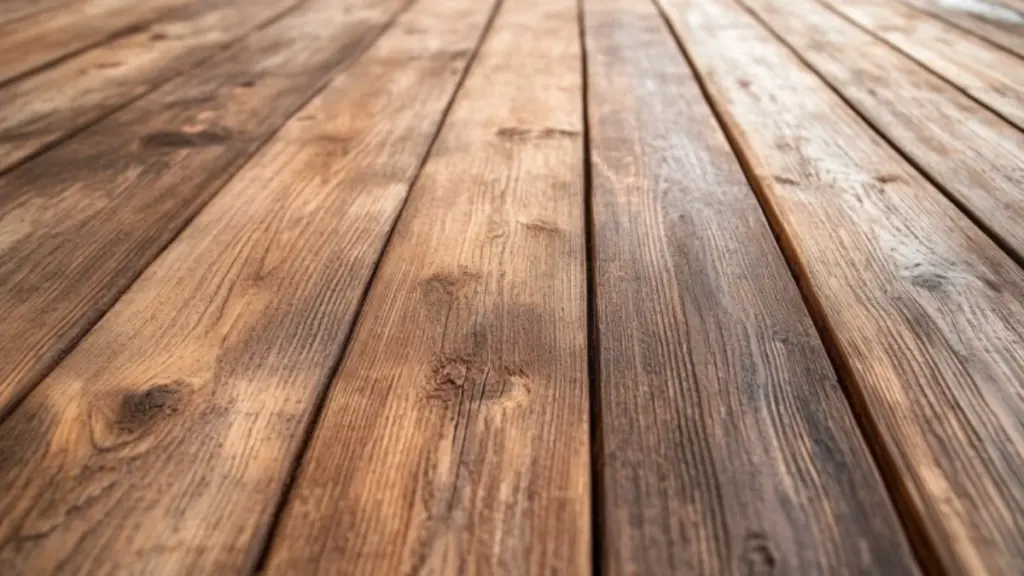
Beyond color, the finish or opacity of your stain plays a big role in how rich and sophisticated your deck looks. Opacity refers to how much wood grain is visible after staining.
Transparent and semi-transparent stains highlight the natural grain and texture of the wood, giving an organic, high-end feel. Solid stains, on the other hand, cover most of the grain and act more like paint—ideal for creating bold, uniform color.
Semi-solid finishes strike a balance between coverage and visibility. These are great for older decks with wear but still visible grain.
Stain Opacity Levels Explained
| Opacity Type | Wood Grain Visibility | Best Use Case |
|---|---|---|
| Transparent | High | New or premium wood |
| Semi-transparent | Medium–High | Light character, slight wear |
| Semi-solid | Moderate | Older decks needing a refresh |
| Solid | Low | Uniform color, maximum protection |
Conclusion
Choosing a rich deck stain color is more than a matter of taste—it’s a design decision that transforms your outdoor space into a sophisticated retreat. Whether you’re drawn to the deep warmth of mahogany, the sleek coolness of charcoal, or the soft charm of weathered gray, each color has the power to shape mood, function, and visual flow.
The key is finding a shade that complements your home’s architecture, reflects your personal style, and supports your deck’s long-term care. With thoughtful stain selection and the right finish, your deck becomes more than just a floor—it becomes an inviting space where elegance and everyday comfort coexist beautifully.
